From ‘the Girl in the Burning Dress’ to Nan: Burn Survivor Pauline Gough tells her story
This blog post is about Pauline Gough, the latest subject of the Children’s Burns Trust’s ‘A burn injury is for life’ campaign. Pauline, who at the age of seven suffered a life changing burn injury in 1954, was interviewed in 2018 by Professor Jonathan Reinarz (University of Birmingham) and Dr Shane Ewen (Leeds Beckett University) as part of an Arts and Humanities Research Council-funded project called Forged by Fire: Burns Injuries and British Identity, c.1800-2000. This project is researching the experience of personal and collective tragedies involving burns and scalds, and how these have impacted upon the personal and collective identities of the patient, medical professionals, emergency services and others. Graphic novel stories are being produced to illustrate some of these experiences – and Pauline’s is the latest story to be told in this way. In this blog post Jonathan and Shane tell us Pauline’s story in the hope that it inspires burns survivors and their parents as they adapt to their changed lives. Pauline suffered her injury at a moment of major social change in post-war British society and has gone on to live a rich and fulfilling life as a wife, mother and ‘nan.
Pauline was born in a post-war Coventry that was itself being ‘reborn’ after suffering extensive destruction during the Blitz of 1940-41.
Pauline’s father worked at the General Electric Company’s Telephone Works near their home on The Chantries, a cul-de-sac of good quality semi-detached council houses, with gardens, built in the 1930s. These must have felt palatial compared to the rows of terraced housing on neighbouring streets in Hillfields.

Source: County Series OS Map 1937, from Edina Digimap. Landmark Information Group and Crown Copyright 2019.
On 2nd November 1954, Pauline walked home from school with her brother in high spirits, singing ‘We break up, we break down, we don’t care if the school falls down’ to the tune of Nick Nack Paddy Whack. The happy atmosphere soon deteriorated after she got hold of a firework, which had been hidden inside the family’s piano for the forthcoming Guy Fawkes’ celebrations, and lit it at an unguarded fireplace in her living room. What followed happened quickly: her clothes caught fire; she remembers feeling ‘nothing at first, and then the pain kicked in ‘all of a sudden’. Neighbours heard screams; they found her in flames standing on an armchair. She was wrapped in a blanket to smother the flames while neighbours threw buckets of water over the blazing furniture. Pauline was then rushed to the Coventry & Warwickshire Hospital with severe burns to her arms, legs and front and back of her body.
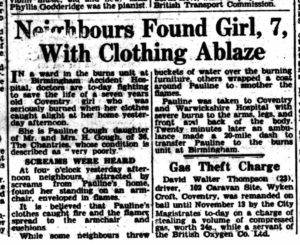
When the extent and seriousness of Pauline’s injuries were recognised by hospital staff, it was decided to transfer her to a specialised burns team twenty miles away. While Birmingham had an Accident Hospital since 1941, two years after its foundation the hospital board also opened a burns unit. Led by infection expert Leonard Colebrook, the team quickly developed an international reputation for developing burns care that controlled the infections that regularly plagued burn survivors. Not only was this important in ensuring the survival of patients, but the successful use of skin grafts required patients be kept infection-free.
Although admitted to one of the world’s leading burns unit, Pauline spent the next three years in hospital undergoing treatment. Her memory of these first weeks, are limited, largely because she was heavily sedated. The extent of her burns and the need for regular re-bandaging meant that Pauline needed to be anaesthetised. Bandaging was made somewhat easier, if only somewhat less painful, through the use of baths. Besides her own screams, Pauline recalls being lifted from a special rotating burns bed, and lowered into the bath. Not surprisingly, she often pretended to be asleep when staff came to her ward to change her dressings.
Although the hospital attempted to discharge Pauline early, her family could not immediately cope with her treatment at home. Over the next years, her parents would visit her, usually for an hour on weekends. Fed porridge and high-energy drinks that did not agree with her, Pauline vividly recalls vomiting into a big coloured handkerchief her father brought with him on his visits. The food supplements, however, helped her regain mass and undergo numerous operations to graft skin and improve movement in her arms. Other than festivities, such as Christmas, when patients enjoyed the freedom to wander the wards and visits more freely than usual, Pauline was distracted from the monotony on the wards by the babies ward, a teacher who visited her for approximately 10 minutes on weekdays and occasionally by helping out on the wards, taking temperatures for example.
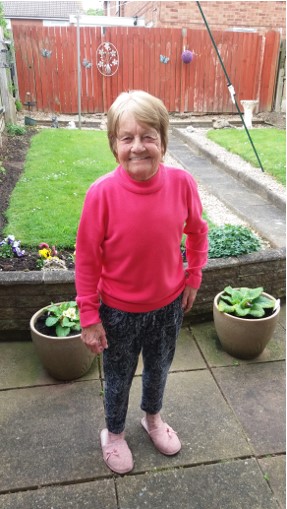
Fireworks injuries, such as the one suffered by Pauline, had been a cause of concern for government and safety organisations since at least the 1930s. In the 1950s and 60s there was a renewed interest as the number of injuries escalated. In 1961 just over 400 cases were committed to hospital for in-patient treatment and about 3,500 cases were treated by hospital out-patient departments. Additional anxiety existed at the continued dangers of unguarded fires in the home, especially for girls wearing free-flowing flammable dresses. With her mother’s permission, Pauline’s clinical photograph, showing the full extent of her scarring, was included on a burns prevention poster for a 1961 campaign alongside a staged photograph of a girl in a burning dress in order to warn parents of the dangers of leaving their children to play unsupervised. It was displayed in children’s clinics, health centres and high street shop windows up and down the country and must have shocked many people into action.
Pauline was around 9 years old when she started to walk. Unable to sit properly, she needed to be lifted from her bed by her father. When she returned to school, she attended a special school for about six months and recalls struggling with maths and fractions in particular. But when she returned to school with her old friends it was business as usual. More than anything, she wanted to be treated just like any other of the children. Life did get better, but occasionally Pauline wished that she had had someone with whom to discuss her challenges when she was 12 or 14 years old.
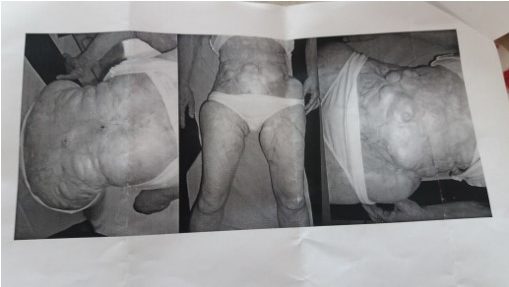
Although Pauline does not remember much bullying, she specifically dressed in ways that covered her burns, even in summer, when she would have preferred short sleeves. This usually involved wearing a polo-neck jumper. One day, when wearing a dress, a girl in her class reacted with disgust when catching sight of Pauline’s scars. Her mother heard about this, went to the school and had a word with Pauline’s classmate. They soon became close friends, and even socialised together in later years. Surrounded by a strong peer group, Pauline went to town, and regularly danced. She met her husband-to-be in a local social club. When she became pregnant with the first of three children, she quit working.
Although told by medical staff that she would not be able to have children, Pauline’s pregnancy was not without its difficulties. Not only did burn scars restrict the ability of her skin to stretch, but breast-feeding was impossible due to the injuries Pauline sustained as a child. Caesarians were used to deliver her next two children, but incisions healed with difficulty. On one occasion, the stitches burst and the wound healed very slowly.
Although much of Pauline’s story is historical, it continues to inspire and hold many relevant lessons. Burns treatment has indeed come a long way since the 1950s and 60s, but some of the challenges that survivors face have not changed. Fireworks are still a part of many celebrations, and children continue to be the main patient group despite regular educational programmes and stricter controls over their sale and safe use. Moreover, complications mean healing often takes years. The existence of patients groups and charities, like the Children’s Burns Trust means that there are other people to help survivors along their journeys.
Related content
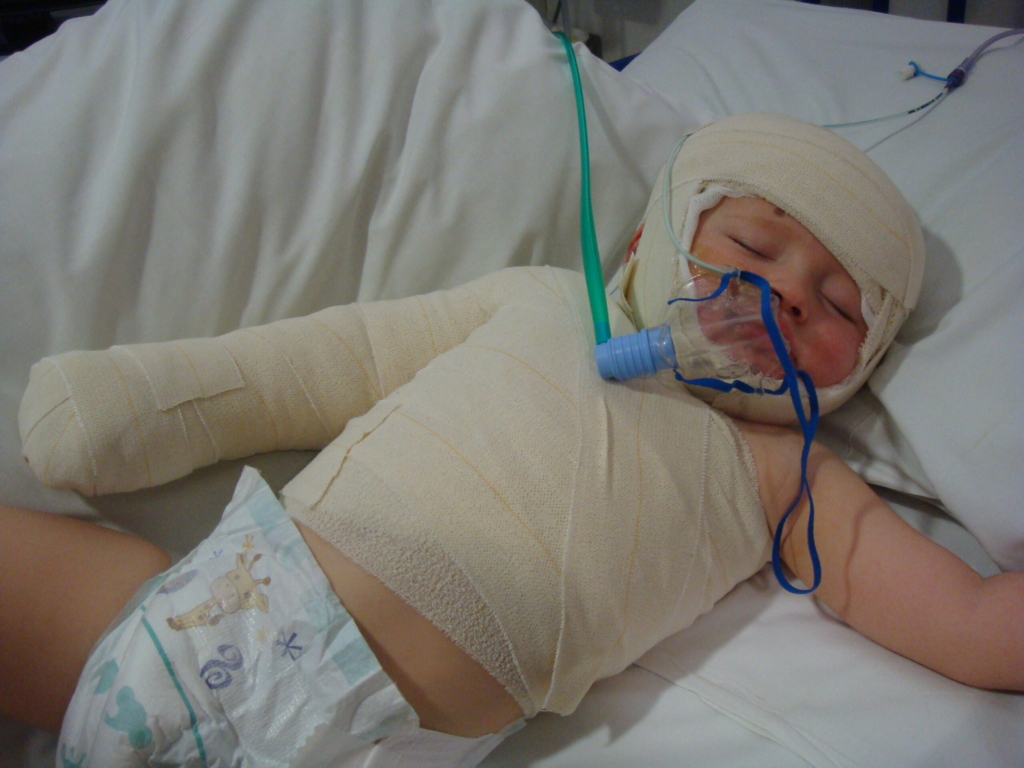
Donate to us
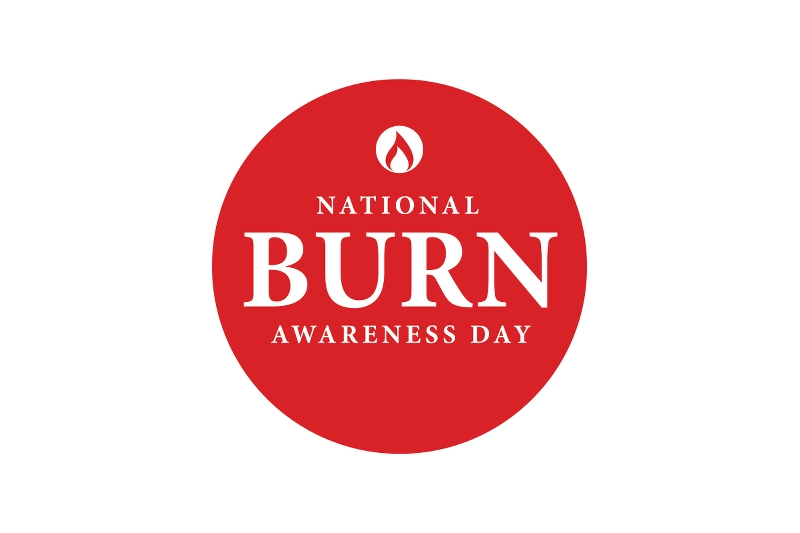
Campaigns
